Iran, a land of ancient civilizations and breathtaking landscapes, boasts a wealth of captivating tourist destinations that beckon travelers with their historical significance, cultural richness, and natural beauty. From the majestic ruins of Persepolis to the ornate architecture of Isfahan, the tranquil gardens of Shiraz to the desert oasis of Yazd, and the bustling streets of Tehran to the pristine shores of Qeshm Island, Iran offers a diverse tapestry of experiences that cater to every traveler’s interests.
Steeped in history and tradition, Iran’s most touristic places glimpse its storied past while inviting visitors to explore its vibrant present. Whether drawn by the grandeur of ancient empires, the charm of traditional bazaars, or the allure of untouched natural wonders, Iran’s allure as a destination is boundless, promising an enriching journey that transcends time and culture.
From a tourist’s perspective, Iran offers a plethora of captivating destinations that showcase its rich history, culture, and natural beauty. Here are some of the most sought-after tourist spots in Iran:
Isfahan City: Architectural Masterpieces and Cultural Splendor

Isfahan City
Isfahan, often called “Half of the World,” is a city in Iran renowned for its stunning architecture, historic sites, and cultural significance. Some of Isfahan City‘s most iconic tourist attractions include:
- the UNESCO-listed Naghsh-e Jahan Square,
- a UNESCO World Heritage Site, which features the majestic Imam Mosque,
- the Sheikh Lotfollah Mosque,
- the Ali Qapu Palace,
- and the Qeysarie Gate.
These intricate patterns and tilework showcase the city’s rich artistic heritage. Other notable attractions in Isfahan include the Chehel Sotoun Palace with its mirrored hall, the historic Jameh Mosque, the Vank Cathedral in the Armenian Quarter, and the historic Si-o-se-pol and Khaju bridges that span the Zayandeh River. These landmarks, bustling bazaars, and vibrant street life make Isfahan an enchanting destination that captures the essence of Iran’s cultural and architectural legacy and makes Isfahan City one of the most touristic places in Iran.
Persepolis: Ancient Splendor and Royal Ruins
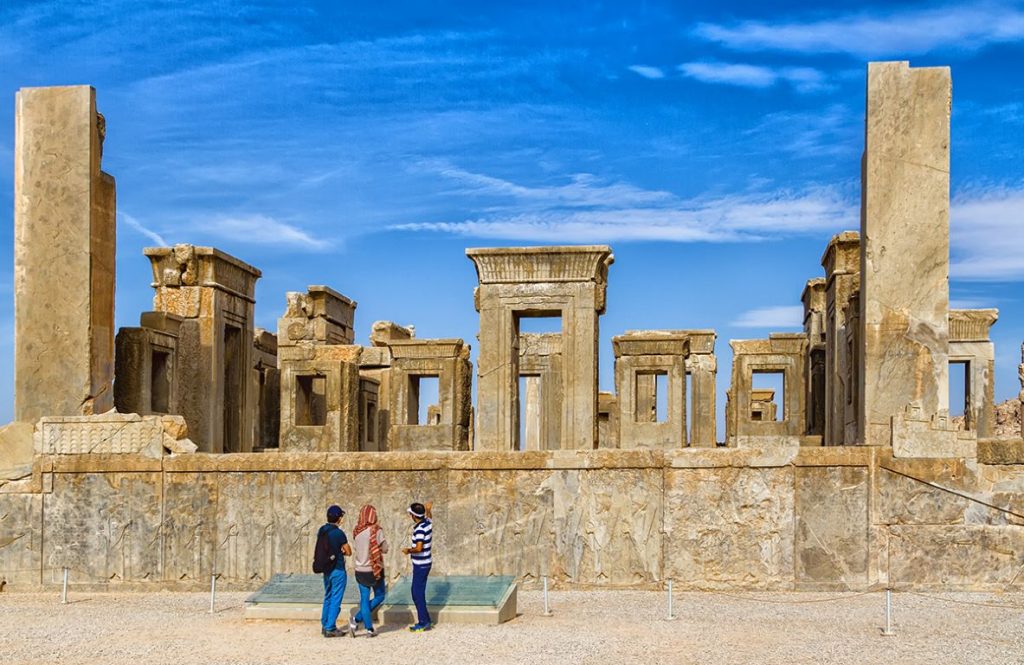
Persepolis
Persepolis, located in the southwestern region of Iran, is a testament to the grandeur of ancient Persian civilization. This archaeological marvel was once the ceremonial capital of the Achaemenid Empire, founded by King Darius I in the 6th century BCE. Persepolis, which translates to “City of Persians,” was meticulously constructed over several decades and symbolized power, culture, and unity for the empire.
The site’s monumental ruins showcase an array of magnificent structures, including imposing staircases, grand gateways, audience halls, and intricately carved reliefs that depict scenes of imperial processions, cultural diversity, and mythological narratives. The Apadana Palace, with its 72 stone columns and the grand Gate of All Nations, are among the most iconic features, illustrating the impressive architectural and artistic achievements of the time.
While the city faced destruction during the conquest of Alexander the Great in 330 BCE, its remains continue to evoke a sense of awe and wonder. Today, Persepolis is a designated UNESCO World Heritage Site. It draws visitors worldwide to explore its ancient history and marvel at the intricate details that tell the story of a once-mighty empire. Visiting Persepolis offers a unique opportunity to step back and gain insights into ancient Persia’s rich cultural heritage and achievements.
Shiraz City: Cultural Gem and Poetry Capital

Shiraz City
Shiraz, often referred to as the heart of Iran, is a city that captivates visitors with its rich history, poetic charm, and vibrant cultural scene. Located in the southwest of Iran, Shiraz is renowned for its lush gardens, intricate architecture, and warm hospitality. As the capital of Fars Province, it boasts a blend of ancient heritage and modern allure, making it a must-visit destination for travelers.
Shiraz City‘s most famous attractions:
- Nasir al-Mulk Mosque (Pink Mosque)
- Eram Garden
- Tomb of Hafez
- Tomb of Saadi
- Persepolis
- Pasargadae
- Vakil Bazaar
- Shah Cheragh Mausoleum
- Qavam House (Narenjestan Garden)
- Karim Khan Citadel
- Arg-e Karimkhan
- Afif-Abad Garden
- Qalat Village
- Zinat al-Molk House
- Delgosha Garden
- Jahan Nama Garden
- Atigh Jame Mosque
- Vakil Mosque
- Nasirolmolk Bathhouse
- Pars Museum
These attractions offer a glimpse into Shiraz’s rich cultural heritage, architectural wonders, and natural beauty.
Beyond its historical and literary treasures, Shiraz boasts the picturesque Qavam House, showcasing traditional Persian architecture, and the bustling Vakil Bazaar, where visitors can immerse themselves in local culture and craftsmanship. The nearby ruins of Persepolis and Pasargadae, both UNESCO World Heritage Sites, provide glimpses into the grandeur of ancient Persian civilizations.
Shiraz’s reputation as the “City of Roses and Nightingales” comes alive during the annual Golab (Rose Water) Festival, where the intoxicating scent of roses fills the air, and the Hafez International Poetry Festival draws poets from around the globe to celebrate the art of verse. With its cultural treasures, picturesque landscapes, and hospitable locals, Shiraz is a destination that leaves an indelible impression on every traveler who walks its streets.
Yazd City: Desert Oasis and Architectural Marvels
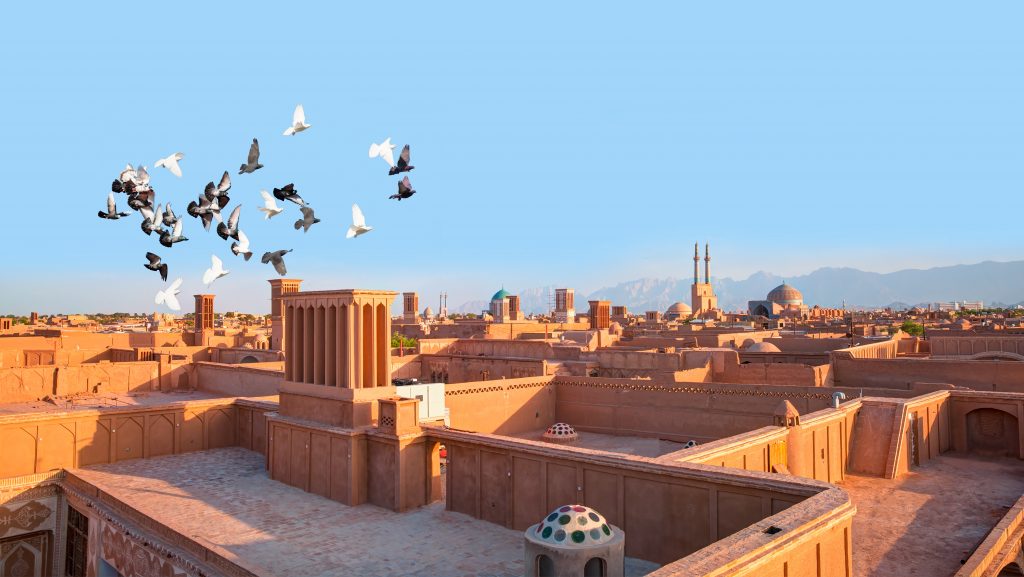
Yazd City
Yazd, often called the “City of Windcatchers” and “City of Zoroastrians,” is a captivating destination in central Iran and one of the most touristic places in Iran that exudes historical charm and architectural beauty.
Nestled amidst the desert landscape, Yazd boasts a rich history that dates back to ancient times. Its labyrinthine alleyways, mud-brick buildings, and traditional windcatchers create a mesmerizing atmosphere that transports visitors to another era. One of the most iconic features of Yazd is its intricate network of windcatchers, traditional architectural structures designed to harness and channel the wind, providing natural ventilation and cooling in the hot desert climate.
These distinctive structures have earned Yazd a UNESCO World Heritage Site designation, making the city a living example of sustainable architectural practices.
Yazd’s allure extends beyond its architectural marvels. The city is renowned for its vibrant Zoroastrian community, one of the oldest monotheistic religions. The Zoroastrian Fire Temple houses a sacred flame that has been burning for centuries, making it a significant spiritual site.
Additionally, the Jameh Mosque of Yazd, with its grand portal and stunning tilework, is a testament to the city’s Islamic heritage. Visitors can explore the narrow alleys of the historic Fahadan neighborhood, lined with traditional houses, colorful bazaars, and charming courtyards.
The juxtaposition of ancient traditions and modern life, along with the warmth of its people, adds to the unique appeal of Yazd. Whether wandering through its old streets or admiring its architectural wonders, Yazd offers an unforgettable journey into the heart of Persian history and culture.
The prominent tourist attractions in Yazd City:
- Jameh Mosque of Yazd
- Amir Chakhmaq Complex
- Yazd Varahan Fire Temple (Zoroastrian Fire Temple)
- Dolat-Abad Garden
- Dowlat Abad Windcatcher
- Yazd Water Museum
- Alexander’s Prison
- Zoroastrian Towers of Silence
- Saheb A Zaman Zurkhaneh
- Khan Bazaar
- Yazd Art House
- Yazd Clock Tower
- Shish Badgiri Ab Anbar (Historic Water Reservoir)
- Ziaiyeh School
- Lariha House
- Yazd Central Prison (Historical Site)
- Haj Khalife Ali Rahbar Confectionery
- Chak Chak (Zoroastrian Pilgrimage Site)
- Dowlat Abad Ice House
- Yazd Jame Mosque Portal
These attractions showcase the unique architecture, historical sites, and cultural heritage of Yazd, making it a captivating destination for travelers.
Tehran City: Cosmopolitan Hub and Modern Marvels
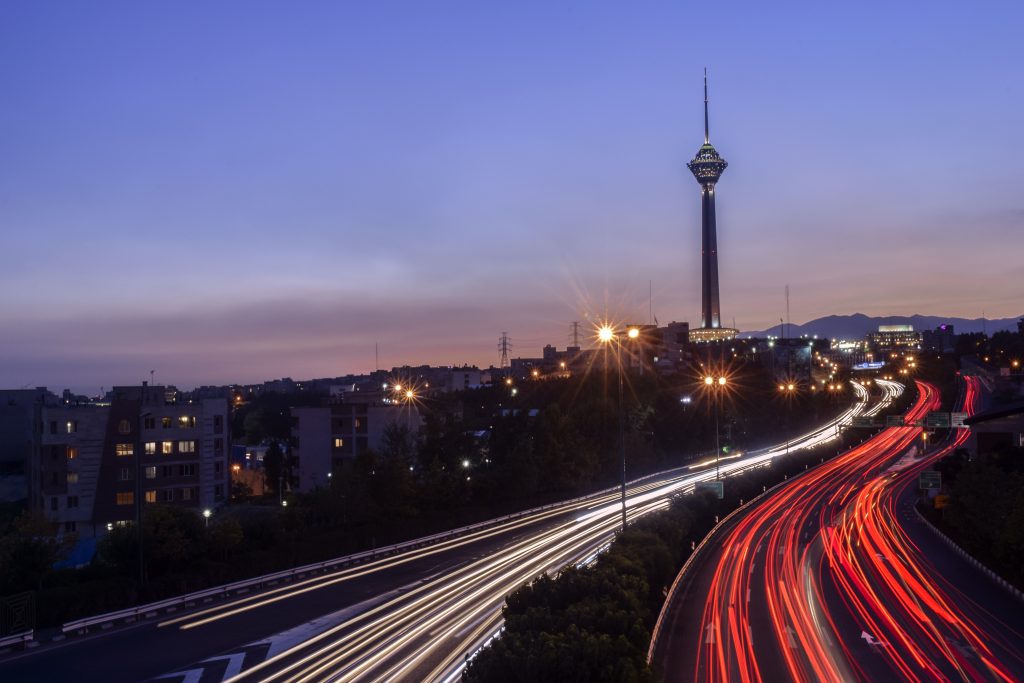
Tehran City
Tehran, the bustling capital of Iran, is a vibrant metropolis that encapsulates the country’s dynamic blend of tradition and modernity. Within the Alborz mountain range, Tehran is a sprawling city that serves as Iran’s political, economic, and cultural hub. With a history of over 200 years, Tehran has evolved from a small village into a cosmopolitan urban center that offers a unique tapestry of experiences.
The city boasts many attractions catering to a diverse range of interests. Golestan Palace, a UNESCO World Heritage Site, showcases intricate Persian architecture and beautifully landscaped gardens.
The National Museum of Iran provides a captivating journey through the nation’s history, displaying artifacts from ancient civilizations that have shaped Iran’s identity. Tehran’s Grand Bazaar, a bustling maze of lanes and stalls, offers a sensory overload of sights, sounds, and aromas, immersing visitors in the vibrant local culture.
The Milad Tower is an iconic modern landmark, offering panoramic views of the city’s sprawling landscape. Tehran is also a cultural hub, featuring a variety of theaters, galleries, and music venues that showcase Iran’s artistic talents. With its lively streets, diverse neighborhoods, and a blend of traditional teahouses and modern cafes, Tehran offers an intriguing mix of past and present that captures the essence of Iran’s multifaceted identity.
The popular tourist attractions in Tehran City:
- Golestan Palace
- National Museum of Iran
- Grand Bazaar
- Milad Tower
- Sa’dabad Complex
- Niavaran Palace Complex
- Azadi Tower
- Tehran Museum of Contemporary Art
- Treasury of National Jewels
- Carpet Museum of Iran
- Tabiat Bridge
- Darband
- Imam Khomeini Shrine
- Tehran’s Nature Bridge (Pol-e Tabiat)
- Reza Abbasi Museum
- Tochal Complex and Ski Resort
- Tehran’s Grand Mosque
- Tehran’s Museum of Glass and Ceramics
- Tehran’s Birds Garden
- Cinema Museum of Iran (Ferdows Garden)
These are just a few of the many attractions Tehran offers for travelers and visitors.
Kashan City: Historical Charm and Serene Gardens

Kashan City
Kashan, one of the most touristic cities in Iran, is located in the Isfahan Province. This city is a captivating blend of rich history, exquisite architecture, and scenic beauty. The city’s allure lies in its well-preserved traditional houses, enchanting gardens, and its pivotal role in the country’s cultural heritage. Walking through the narrow alleys of Kashan’s old neighborhoods, visitors are transported back in time as they explore stunning examples of Iranian architecture like the Tabatabaei and Borujerdi Houses.
These masterpieces boast intricate tilework, delicate stucco, and traditional windcatchers, offering a glimpse into the opulent lifestyle of the past. The city’s centuries-old bazaar is a bustling hub of commerce and culture, where vibrant textiles, spices, and handicrafts create a sensory feast for visitors.
Kashan’s natural beauty is also a draw, with the mesmerizing Fin Garden capturing the essence of Persian garden design. Recognized as a UNESCO World Heritage Site, Fin Garden features flowing water, symmetrical layouts, and fragrant flowers, making it a serene oasis amidst the desert landscape.
Additionally, Kashan’s proximity to historical sites like Abyaneh village and the Maranjab Desert makes it an ideal base for exploring the region’s diverse attractions. From its architectural wonders to its serene gardens and intriguing history, Kashan offers an immersive experience that leaves a lasting impression on travelers seeking a deeper understanding of Iran’s cultural heritage.
The popular tourist attractions in Kashan City:
- Tabatabaei House
- Borujerdi House
- Fin Garden
- Agha Bozorg Mosque
- Sultan Amir Ahmad Bathhouse (Hamam-e Khan)
- Abyaneh Village (near Kashan)
- Maranjab Desert (near Kashan)
- Bazaar-e Kashan
- Ameri House
- Abbasian Historical House
Golestan Province: Nature’s Haven and Cultural Diversity
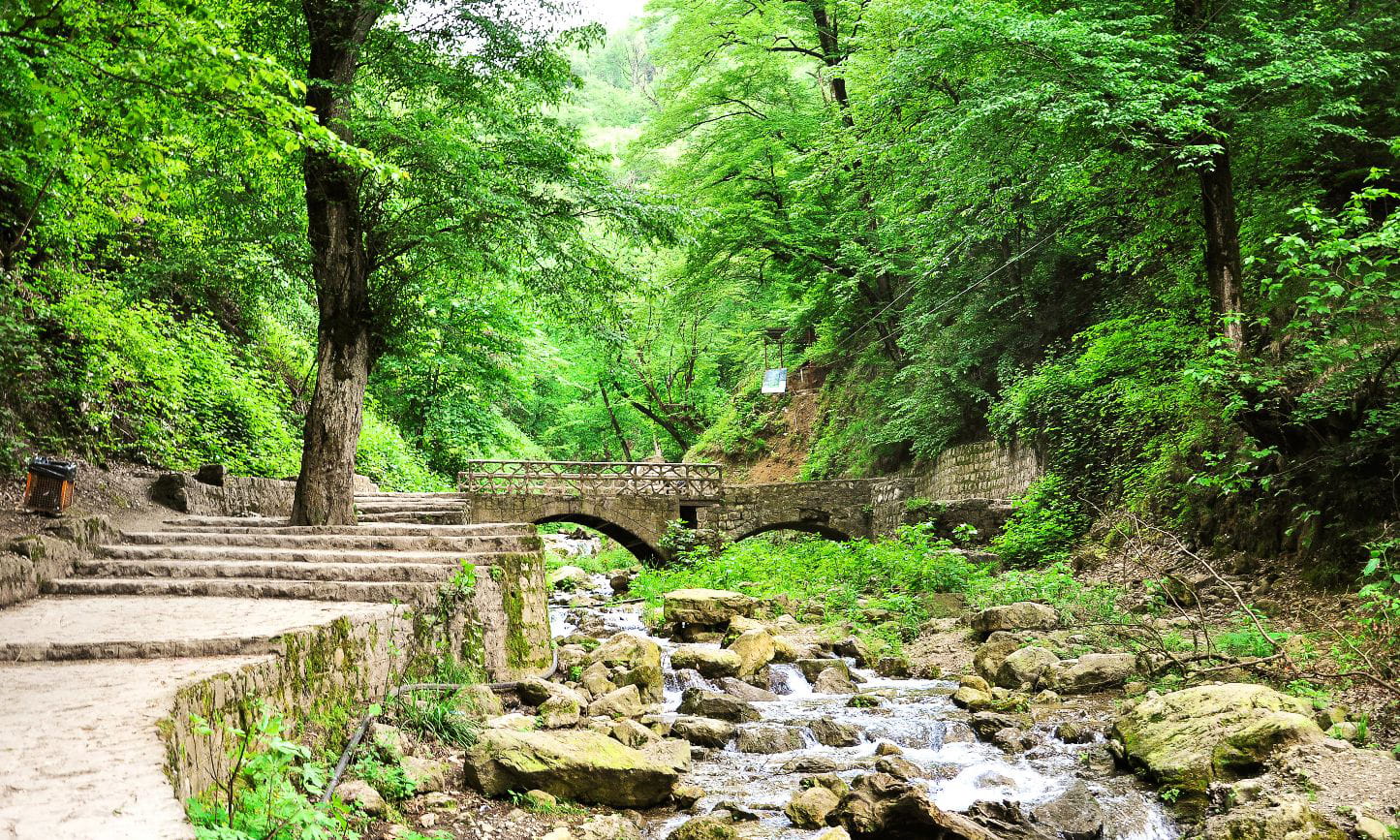
Golestan Nature
Golestan Province, located in northeastern Iran, has diverse landscapes and cultural richness. Its name translates to “Garden of Rosettes,” which reflects this province’s lush greenery and natural beauty. Golestan’s proximity to the Caspian Sea offers a unique blend of coastal attractions, forested mountains, and historical sites.
This province boasts a harmonious blend of various ethnic groups, contributing to a rich tapestry of traditions and customs. Golestan’s capital, Gorgan, serves as the gateway to this captivating region, offering visitors a chance to explore a combination of history, nature, and cultural diversity.
Tourist Attractions of Golestan Province:
- Golestan National Park: A UNESCO Biosphere Reserve known for its diverse flora and fauna.
- Gonbad-e Qabus Tower: A UNESCO World Heritage Site and the world’s tallest brick tower.
- Naharkhoran Forest: A pristine forest known for its biodiversity and natural beauty.
- Turkmen Sahra: A unique Turkmen cultural region with distinct traditions and customs.
- Aliabad Katoul: A charming town famous for its traditional architecture and handicrafts.
- Azadi Park: A beautiful park in Gorgan, ideal for relaxation and leisure activities.
- Incheh Borun Bridge: A historical bridge dating back to the Sassanian period.
- Alangdarreh Wildlife Refuge: A protected area home to various wildlife species.
- Ramsar Wetland: A Ramsar site with diverse ecosystems and birdwatching opportunities.
- Gorgan Grand Bazaar: A bustling market showcasing local products and craftsmanship.
Mashhad City: Spiritual Center and Modern Oasis
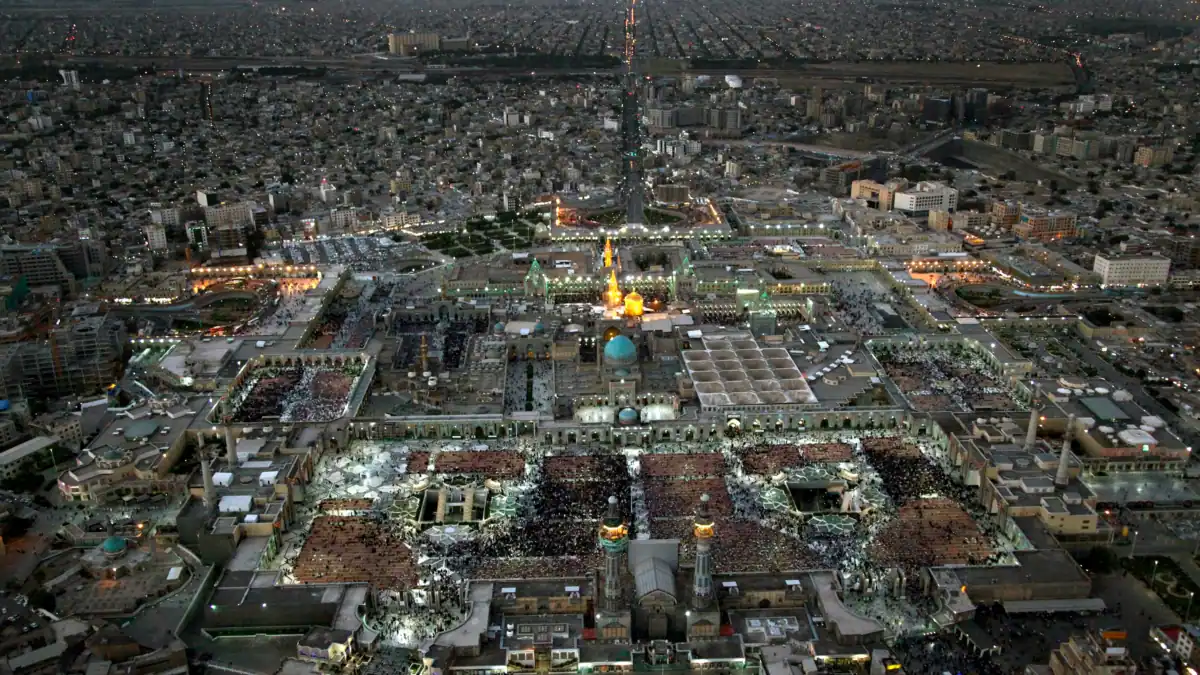
Mashhad city
Mashhad, the capital of Razavi Khorasan Province in northeastern Iran, is significant in religious and cultural contexts. As the holiest city in Iran, it is home to the Imam Reza Shrine, the eighth Shia Imam’s mausoleum, attracting millions of pilgrims annually. Beyond its religious significance, Mashhad offers a blend of history, modernity, and hospitality.
The city’s vibrant bazaars, ornate mosques, and historical sites showcase its rich heritage, while its modern infrastructure caters to diverse visitors. Mashhad’s warm atmosphere and religious importance make it a captivating destination that uniquely marries spirituality and cultural exploration.
- Holy Shrine of Imam Reza
- Goharshad Mosque
- Nader Shah Mausoleum
- Ferdowsi Park and Tomb
- Koohsangi Park
- Mellat Park
- Shandiz
- Vakil Abad Park
- Tomb of Khajeh Rabi’
- Tus Ancient Hills
- Torghabeh Recreation Complex
- Shadi Park
- Darougheh Historical House
- Mashhad Bazaar
- Qasemabad Village
- Mellat Garden
- Mashhad Water Waves Land
- Koohestan Park
- Mashhad Zoo
- Chalidreh Dam
Tabriz City: Cultural Crossroads and Ancient Bazaar
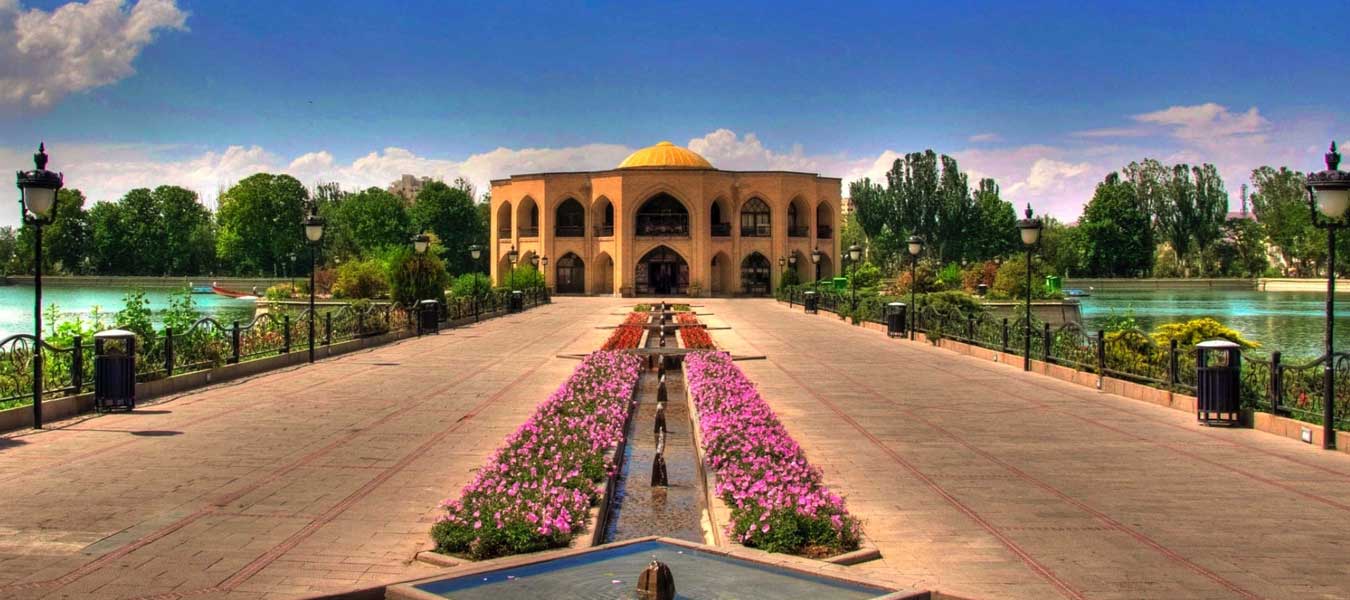
Tabriz City
Tabriz, situated in the northwestern region of Iran, is a city that boasts a rich history and vibrant culture. Known as the “City of Firsts,” Tabriz has a significant role in Iran’s economic, cultural, and historical landscape. It has been a hub of commerce, trade, and craftsmanship for centuries, exemplified by its historical bazaar, a UNESCO World Heritage Site, and one of the oldest and largest covered markets globally.
The city is adorned with various architectural gems, such as the stunning Blue Mosque, which showcases intricate blue tilework and intricate designs, and the impressive Tabriz Historic House, reflecting the grandeur of a bygone era. Beyond its historical significance, Tabriz is a melting pot of ethnic and cultural diversity, celebrated through its festivals, traditional crafts, and renowned cuisine.
The tourist attractions in Tabriz City:
- Tabriz Historic Bazaar Complex (UNESCO World Heritage Site)
- Tabriz Blue Mosque (Jameh Mosque)
- Tabriz Historic House
- El Goli Park and Lake
- Tabriz Constitution House
- Eil Goli Pavilion
- Qajar Museum
- Iron Age Museum
- Azerbaijan Museum
- Tabriz Municipality Palace
- Maqbaratoshoara (Tomb of Poets)
- Tabriz Citadel (Arg-e Tabriz)
- Kaboud Mosque
- Saat Tower (Tabriz Clock Tower)
- Azerbaijan Museum of Tabriz
- Shahriar Park
- Tabriz Amusement Park
- Tabriz Carpet Museum
- Kandovan Village (Near Tabriz)
- Mashrouteh House
These attractions offer visitors a glimpse into Tabriz’s rich history, architecture, and cultural heritage.
Qeshm Island: Geological Wonders and Coastal Beauty
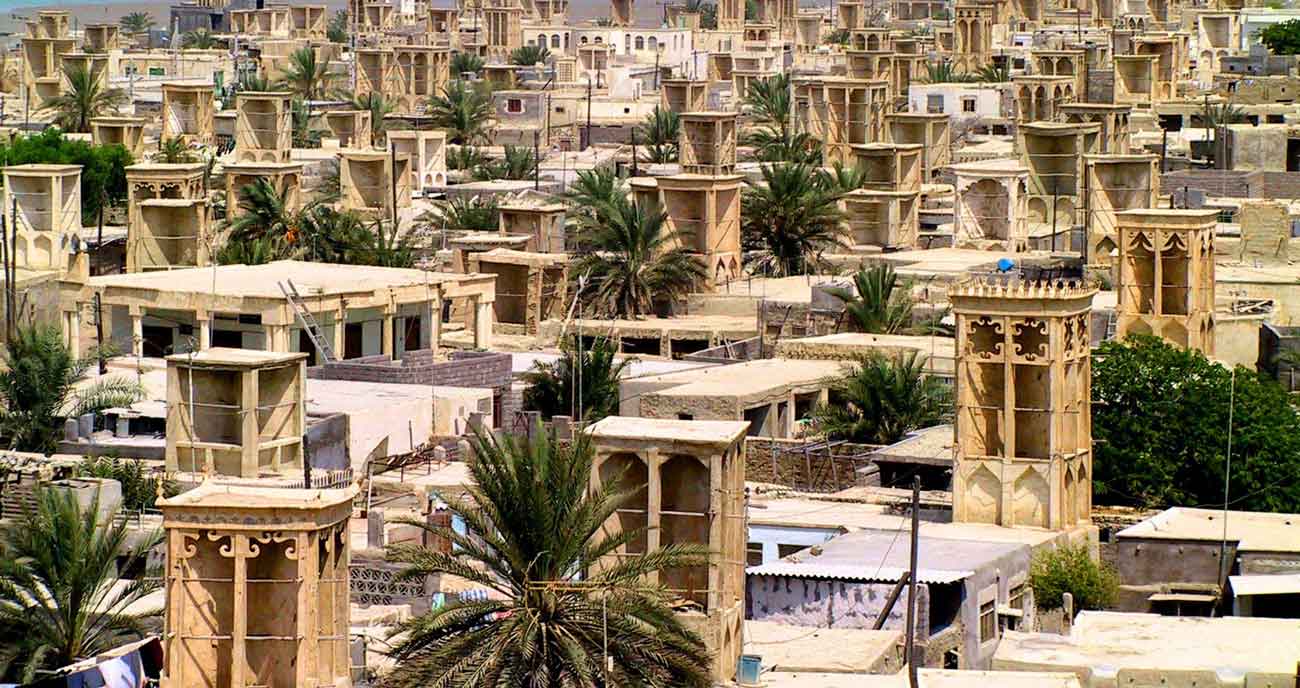
Laft Village Qeshm Iran
Qeshm Island, located in the Persian Gulf near the southern coast of Iran, is the largest island in the country and offers a unique blend of natural beauty, cultural heritage, and vibrant traditions. Known for its stunning landscapes, Qeshm Island boasts diverse attractions that captivate travelers worldwide.
The island’s dramatic geological formations, including the renowned Chahkooh Canyon, showcase layers of colorful rocks sculpted by wind and water over millions of years. Qeshm’s expansive beaches, such as the dazzling Hengam Beach, provide a tranquil retreat for sun-seekers and water sports enthusiasts. The Hara Forest, a UNESCO-designated biosphere reserve, is another remarkable natural site on the island, home to rare plant and animal species.
Qeshm’s cultural heritage is equally compelling, with historical sites like the Portuguese Castle and Tangeh Chahkook showcasing the island’s strategic importance throughout history. The island’s traditional villages, like Laft and Shib Deraz, offer a glimpse into local life and showcase traditional architecture, handicrafts, and the unique lifestyle of its inhabitants.
As a free trade zone, Qeshm also offers modern infrastructure, hotels, and recreational facilities, making it an inviting destination for leisure and business travelers. Whether exploring the wonders of its geology, immersing in its cultural heritage, or enjoying its sandy shores, Qeshm Island promises an unforgettable and diverse experience highlighting Iran’s southern coastline’s natural and cultural richness.
The important tourist attractions on Qeshm Island:
- Chahkooh Canyon: A stunning geological formation with colorful layers of rocks carved by wind and water, creating a mesmerizing landscape.
- Hengam Island: A nearby island known for its beautiful beaches, clear waters, and opportunities for dolphin-watching.
- Hara Forest: A UNESCO biosphere reserve featuring a unique mangrove ecosystem with diverse plant and animal species.
- Portuguese Castle: A historical fortress built during the Portuguese colonial period, offering panoramic views of the surrounding area.
- Tangeh Chahkook: A historic canyon with ancient aqueducts and water channels reflecting the island’s rich history.
- Stars Valley: A unique valley with strange rock formations resembling stars created by natural erosion.
- Naz Island: A small island known for its pristine beaches and coral reefs, perfect for snorkeling and diving.
- Laft Traditional Village: A village showcasing traditional architecture, wind-catchers, and local crafts, providing insight into local culture.
- Shib Deraz Village: Another traditional village famous for its unique architecture and vibrant cultural heritage.
- Khorbas Cave: A captivating cave system with stunning stalactite and stalagmite formations.
- Mangrove Forest of Shib Deraz: A scenic mangrove forest offering boat tours through its intricate waterways.
- Dolphin Park: An opportunity to interact with dolphins naturally, providing an educational and entertaining experience.
These attractions highlight the diverse natural beauty, historical significance, and cultural richness of Qeshm Island, making it a truly memorable destination for travelers.
Abyaneh Village: Living History and Vibrant Traditions
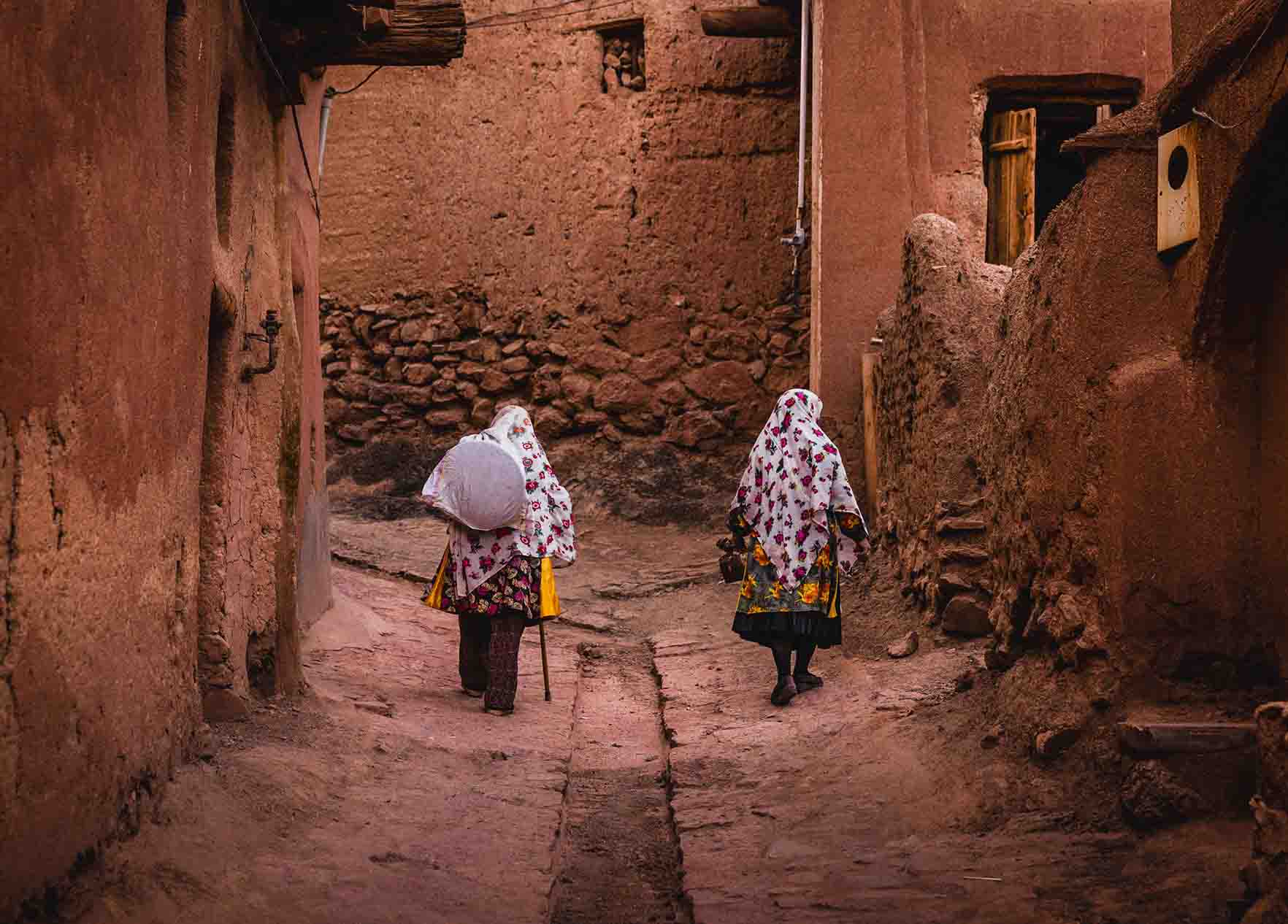
Abyaneh Village
Abyaneh village, nestled within the picturesque mountains of Iran, is a captivating destination that enchants tourists with its timeless charm. Known for its distinct red mud-brick houses, narrow winding alleys, and vibrant traditional clothing, Abyaneh offers visitors a unique journey into Iran’s rich cultural heritage.
The village’s well-preserved architecture reflects centuries of history, providing an authentic glimpse into the past. Travelers can explore its historic mosque, marvel at the intricate patterns adorning its buildings, and interact with friendly locals who proudly uphold their traditional way of life.
Abyaneh’s scenic surroundings offer opportunities for leisurely walks, where travelers can admire the stunning landscape and learn about the region’s customs and traditions. With its warm hospitality and fascinating cultural experience, Abyaneh village continues to captivate tourists seeking an authentic glimpse into Iran’s captivating history and traditions.
Kerman City: Historical Treasures and Desert Charms
Kerman City, a city with a rich historical tapestry woven into the heart of Iran, beckons travelers with its diverse attractions. This vibrant city serves as a gateway to the desert and boasts a blend of ancient and modern elements.
Kerman’s historical sites include the Ganjali Khan Complex, a stunning architectural ensemble with a bazaar, bathhouse, mosque, and caravanserai. The city also houses the Jameh Mosque of Kerman, a testament to Islamic architecture. Beyond the urban landscape, Kerman’s surrounding areas offer natural wonders such as the Lut Desert, a UNESCO World Heritage Site known for its mesmerizing dunes.
The Rayen Citadel and Mahan’s Shazdeh Garden are also among Kerman’s cultural gems. Visitors can explore the city’s rich heritage, savor its renowned pistachios, and immerse themselves in its warm local hospitality. Kerman presents an intriguing blend of history, culture, and natural beauty that captures the essence of Iran’s diverse landscape.
Bandar Abbas: Coastal Gateway and Trade Hub
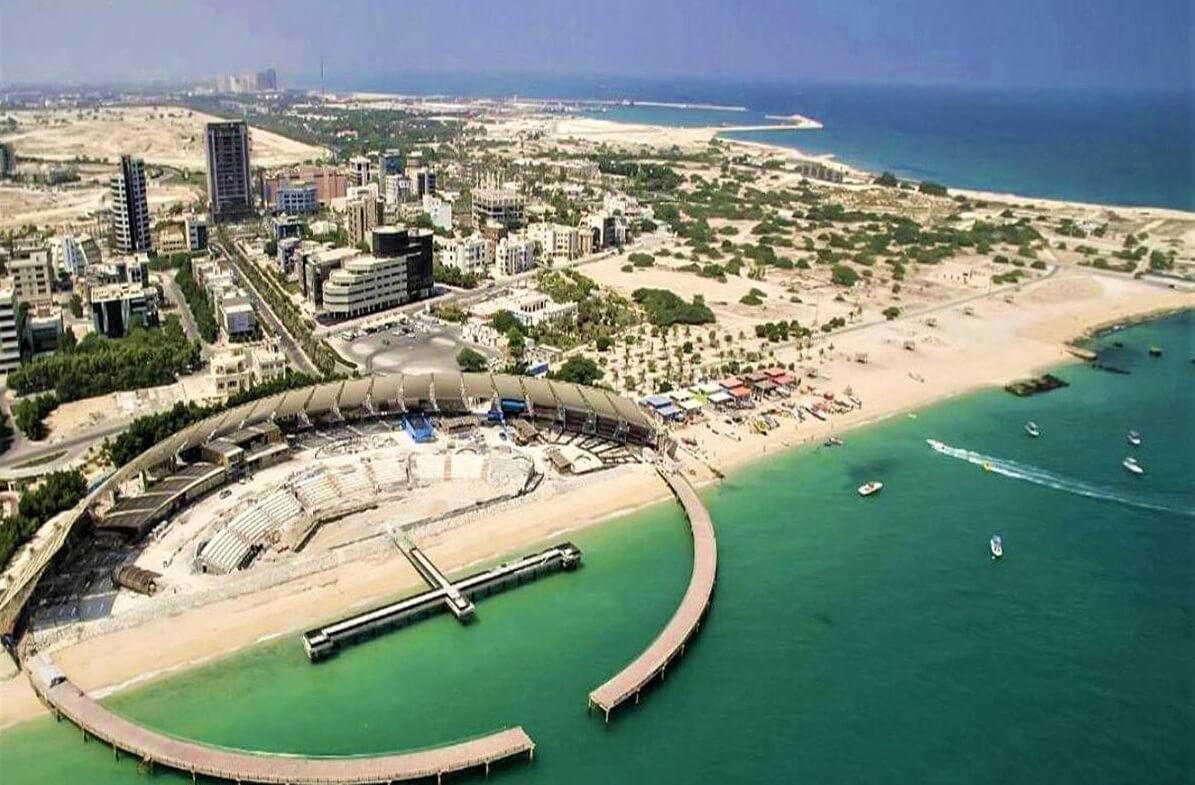
Bandar Abbas
Bandar Abbas, a bustling port city on the southern coast of Iran, offers a unique blend of maritime charm and cultural richness. The city’s vibrant bazaars, such as the Vakil Bazaar, lure visitors with many goods, spices, and handicrafts.
Bandar Abbas City is a gateway to the mesmerizing Hormuz Island, known for its colorful soil and pristine beaches, making it a paradise for nature enthusiasts.
The Qeshm Island, nearby, with its geological wonders and intriguing culture, is also easily accessible from Bandar Abbas. The city’s historic sites provide insights into its maritime past, including the Portuguese-built Fort of Our Lady of the Conception and the 18th-century Hormozgan Museum.
With its bustling markets, access to enchanting islands, and historical landmarks, Bandar Abbas offers a multifaceted experience that captivates travelers exploring the southern regions of Iran.
Hamedan City: Ancient Heritage and Natural Beauty
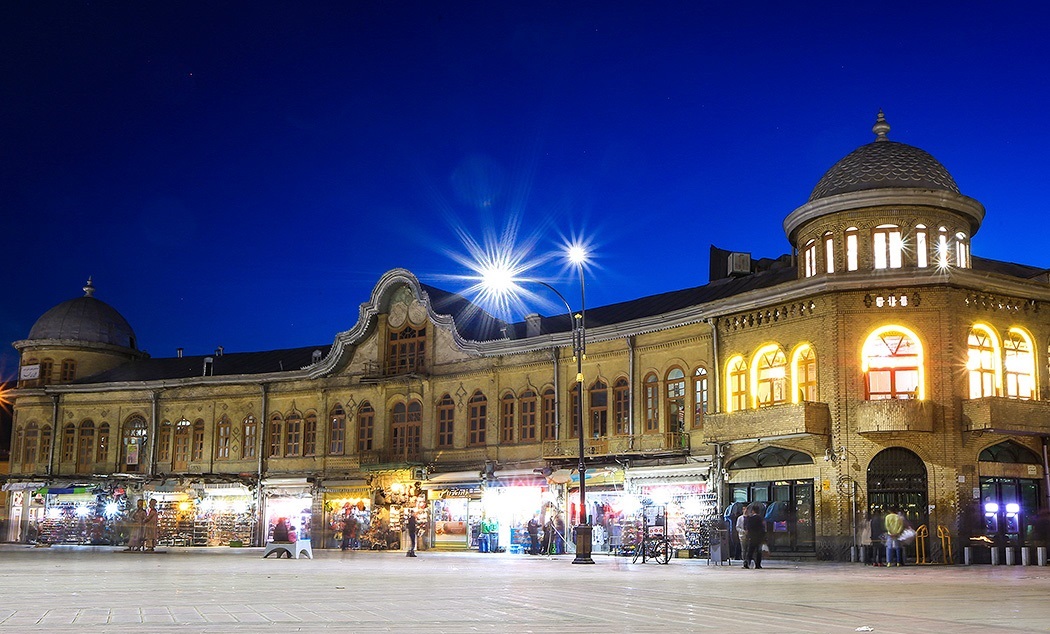
Hamedan City
Hamedan City, often called the ancient city of Ecbatana, is a historical and cultural treasure in western Iran. This city boasts a rich history dating back to ancient times, making it a haven for history enthusiasts.
One of its prominent attractions is the tomb of Avicenna, the renowned Persian polymath and philosopher. The city’s iconic Hegmataneh Archaeological Park reveals the layers of its ancient past through archaeological excavations.
The Ali Sadr Cave near Hamedan is a captivating natural wonder with its underground lakes and stunning formations. Hamedan’s vibrant bazaars and traditional architecture provide a glimpse into the local way of life. The city’s unique blend of historical landmarks, natural beauty, and cultural heritage makes it an enticing destination for those seeking to explore Iran’s multifaceted history and captivating landscapes.

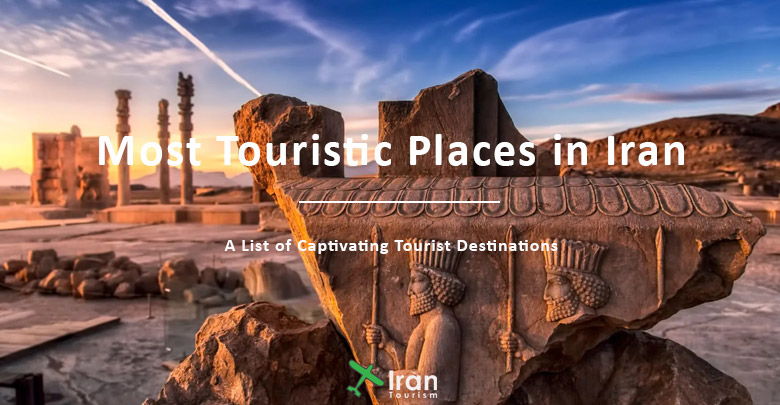
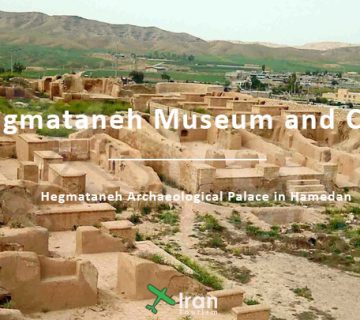
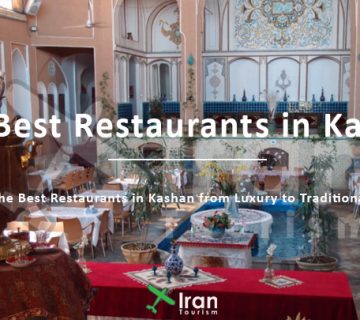
No comment